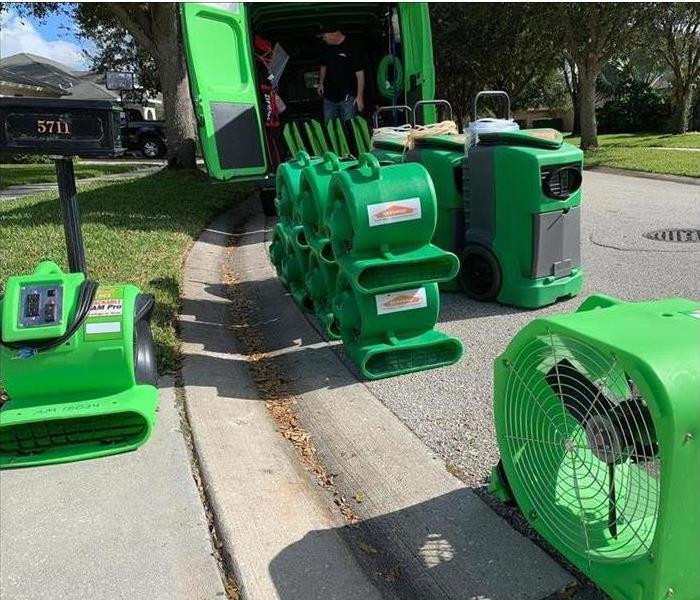General Trends in Seattle Properties with Water Damage
9/29/2022 (Permalink)
 Property owners breathe a sigh of relief when the SERVPRO team from Seattle arrives swiftly for water damage restoration.
Property owners breathe a sigh of relief when the SERVPRO team from Seattle arrives swiftly for water damage restoration.
Experienced SERVPRO Crews Ease Seattle Water Restoration
Most materials exhibit clear signs when exposed to water, including color alterations or changes in physical form. Since other patterns might also develop, knowing them can help you understand the water damage better and resolve the problems at your Seattle home conveniently.
Although exposure may be uniform in your Seattle home, the water damage is rarely consistent. Some changes occur almost instantaneously, while others take time to develop. The differences based on time are broadly categorized into two groups - primary and secondary damages. A seasoned water restoration team like SERVPRO can quickly tell you which secondary issues to expect and whether there are any ways to prevent them from developing. We also find practical solutions to resolve primary damages.
Common primary damages:
- Wood swelling
- Carpet backing delamination
- Rusting metal surfaces
- Buckling of floorboards
Wood is widely used in structural areas like frames, floors, and trim. Many furniture items also include some wooden parts. Wood is naturally porous, so any water accumulating on its surfaces is progressively absorbed into the material's core. As the moisture content rises, the physical form of the wood also changes, which manifests as swelling. Swelling is a fully reversible form of water damage if adequately managed. Our SERVPRO technicians facilitate controlled drying by using dehumidifiers or creating drying chambers to ensure wood dries at a pace that does not lead to permanent form distortion.
Some of the materials exposed to the water are made of different substances. For instance, a carpet has fibers at the top and a couple of backing layers. Backings are usually held together by adhesives. Soaking them for some time and subjecting them to physical pressure leads to the deterioration of the bond, which can lead to separation, known as delamination. Our SERVPRO IICRC-Certified technicians expedite water extraction on carpeted surfaces. We also minimize physical pressure, such as dragging heavy furniture over surfaces or foot traffic.
Moisture Tendencies
Apart from the physical traits of materials or the activities carried out within the property after a water intrusion, moisture also has some characteristics that influence the outcomes. The primary point to note when handling moisture is that nature always seeks equilibrium, which results in consistent patterns such as wetness spreading through materials as it moves from high pressure to low pressure. Any wet materials also dry given sufficient time. However, the water does not magically disappear; instead, it is released into the surroundings. In some instances, such release triggers secondary damages.
Forms of secondary damage:
- Wallpaper softening and peeling off
- Moistening and crumbling ceiling tiles
- Mildew and mold growth
Unlike the readily reversible primary damage, addressing secondary water damage requires elaborate procedures. In some cases, the deterioration in materials is so significant only replacement can resolve it. For instance, water accumulating on ceiling spaces causes the panels to sag. Crumbling is also a likely outcome of the weight and moisture action. Mold development is another significant problem since it consumes materials causing significant rot-like decay. Most materials cannot withstand extended mold growth, whether structural framing, paneling, or surface finishes. Our SERVPRO teams include Applied Microbial Remediation Technicians who can handle mold issues.
SERVPRO of Seattle Northeast has significant experience dealing with water damage cases. Call us at (206) 362-9295 to help make it "Like it never even happened."






 24/7 Emergency Service
24/7 Emergency Service